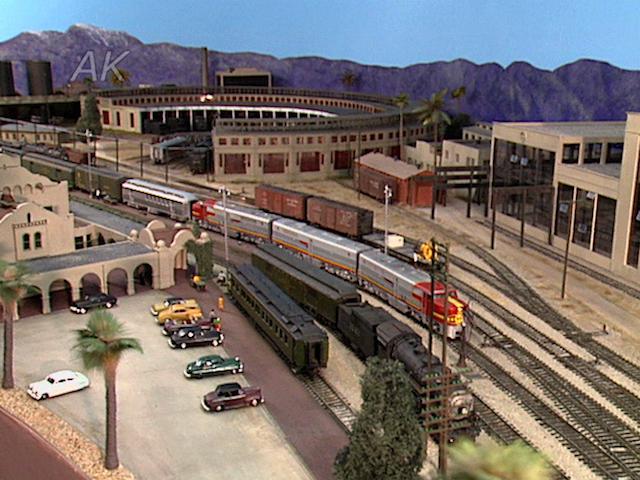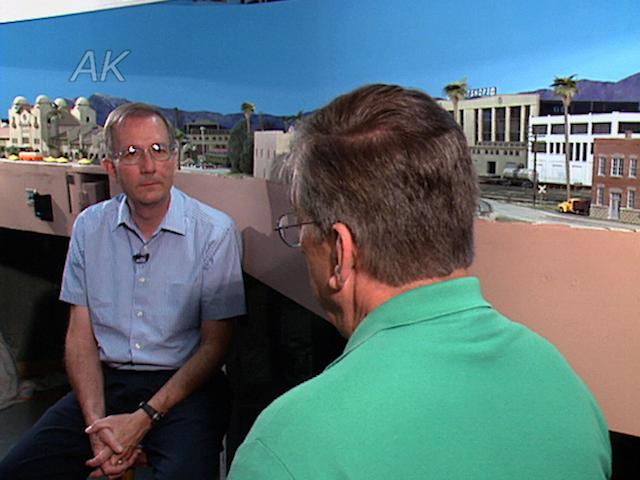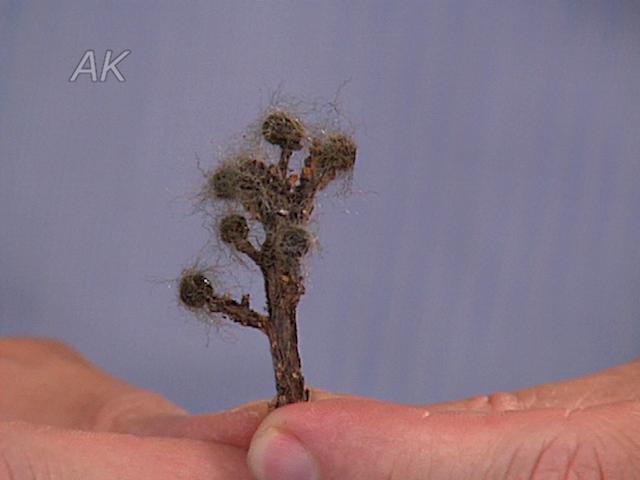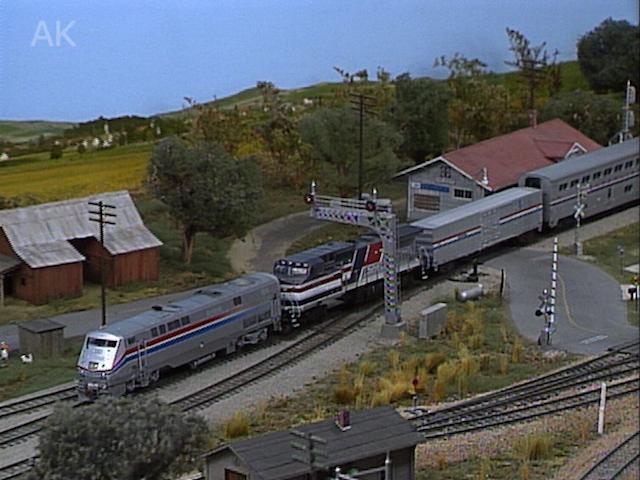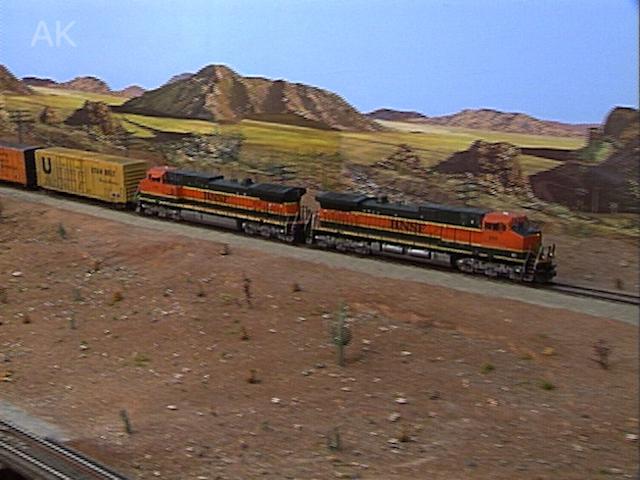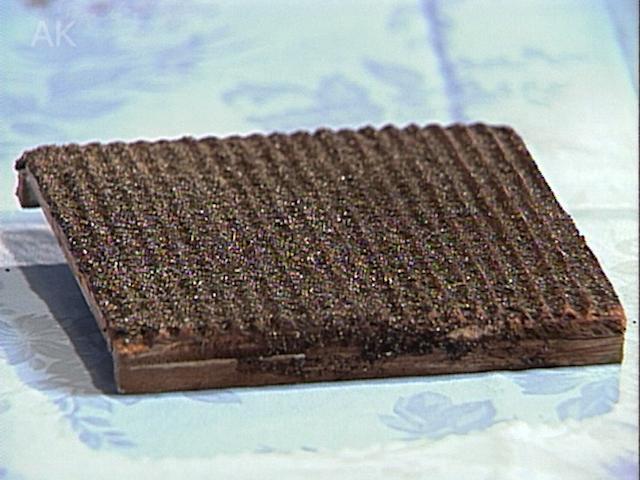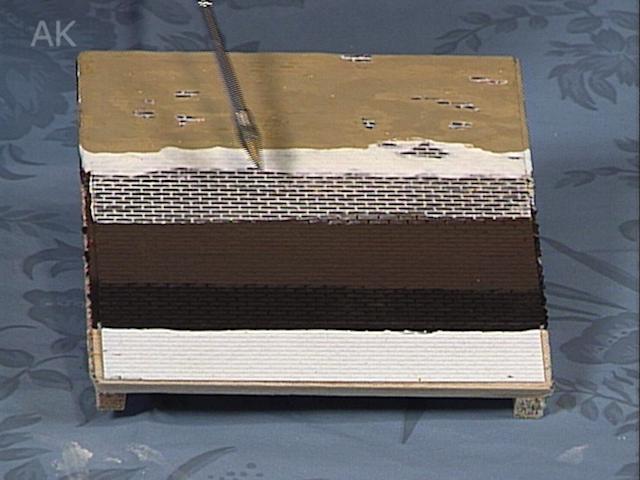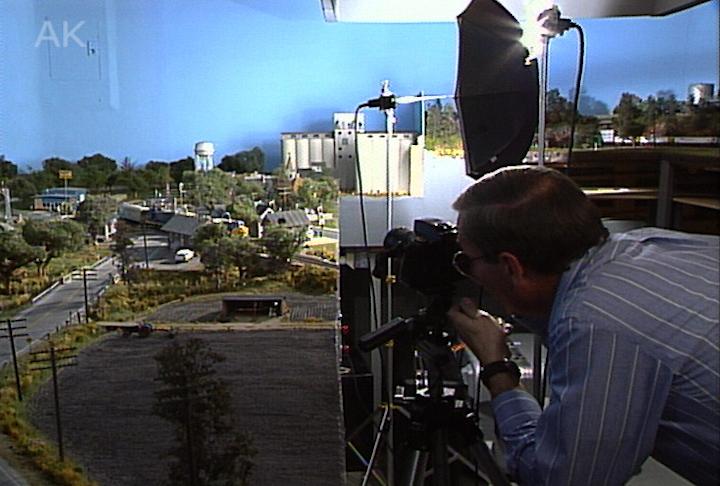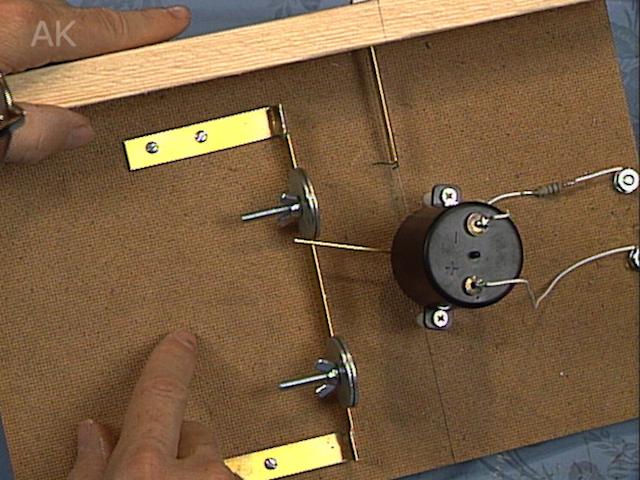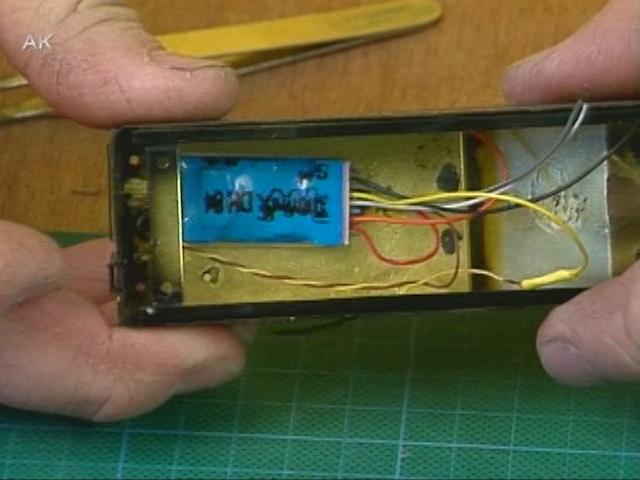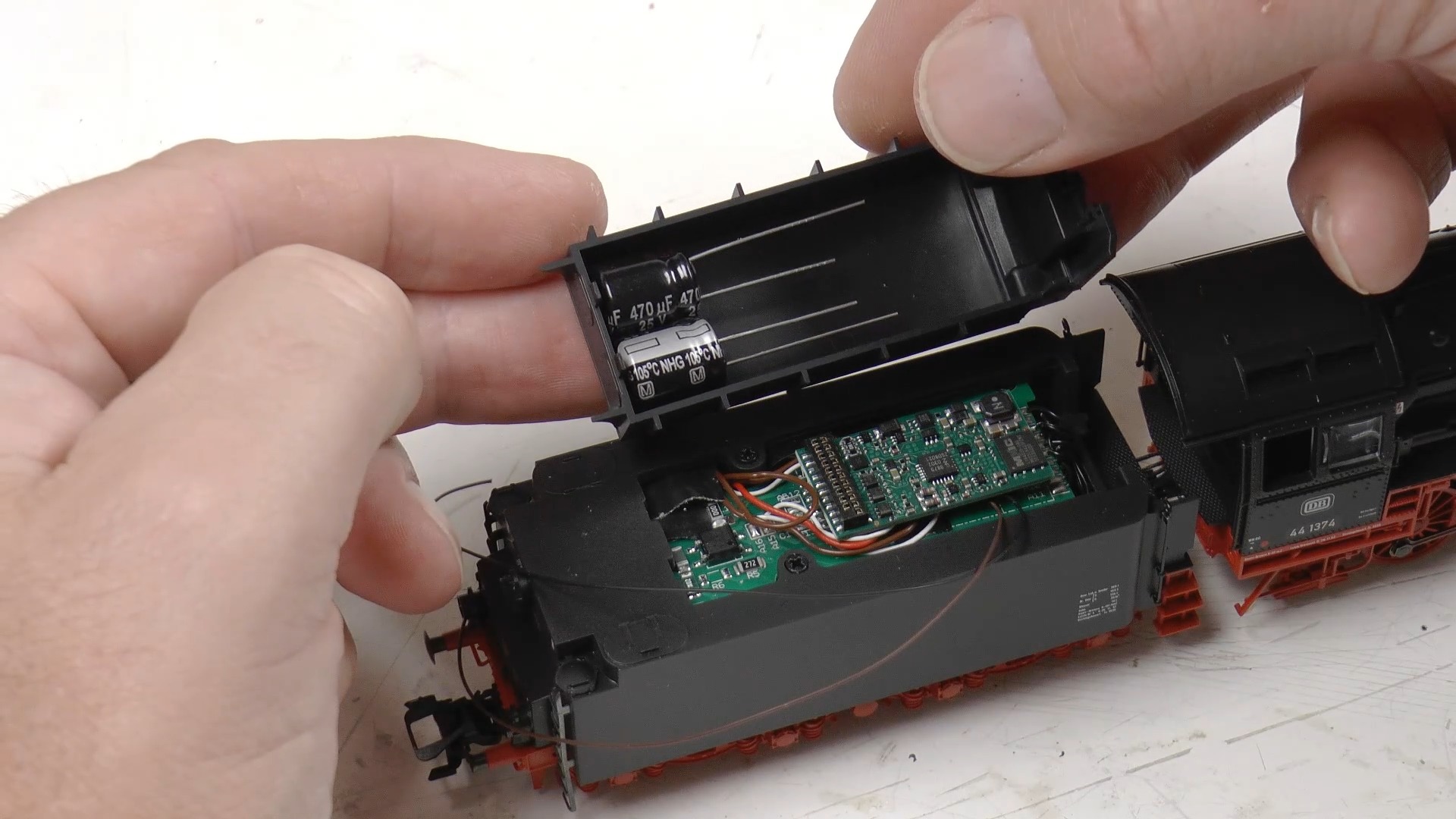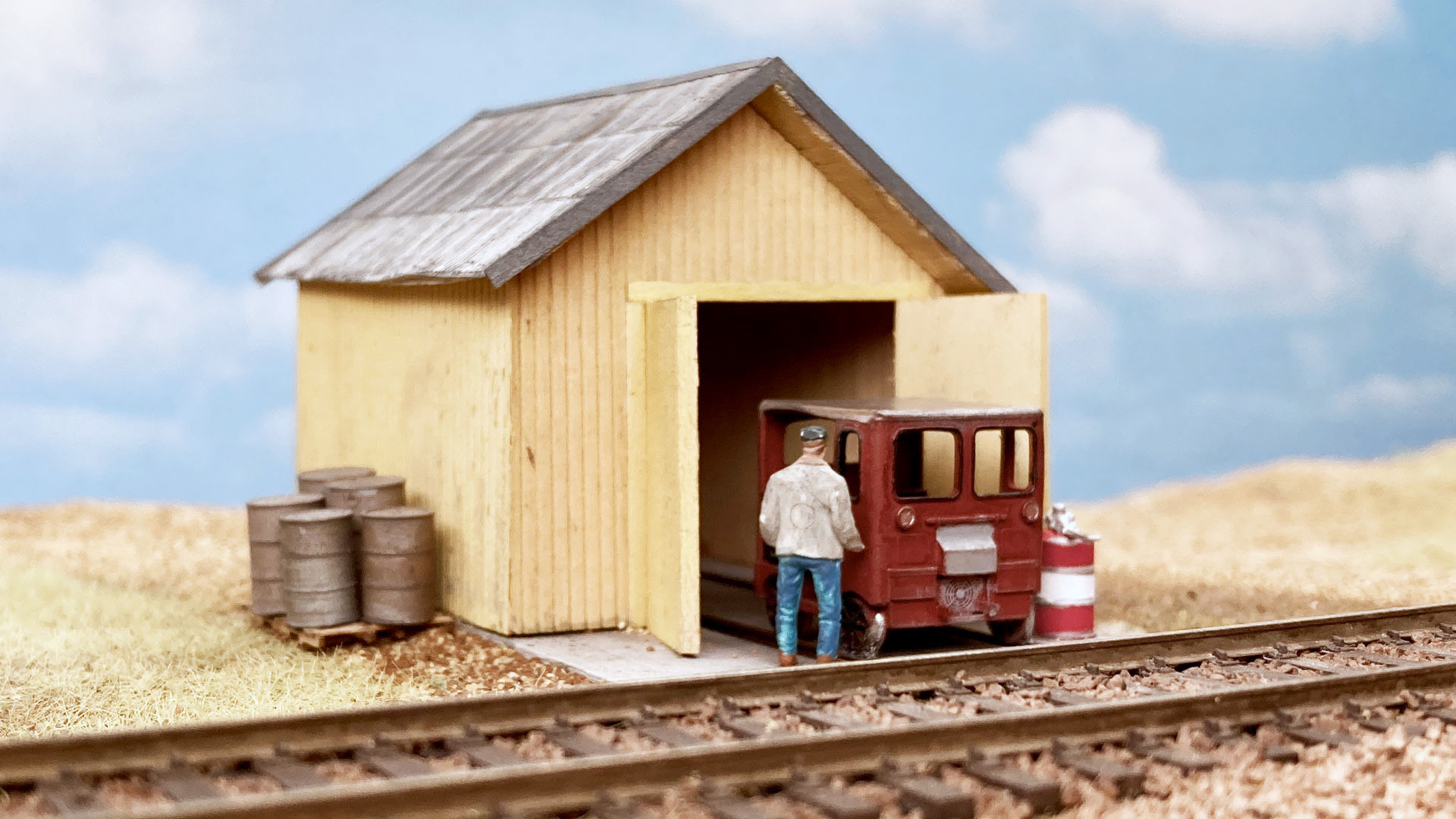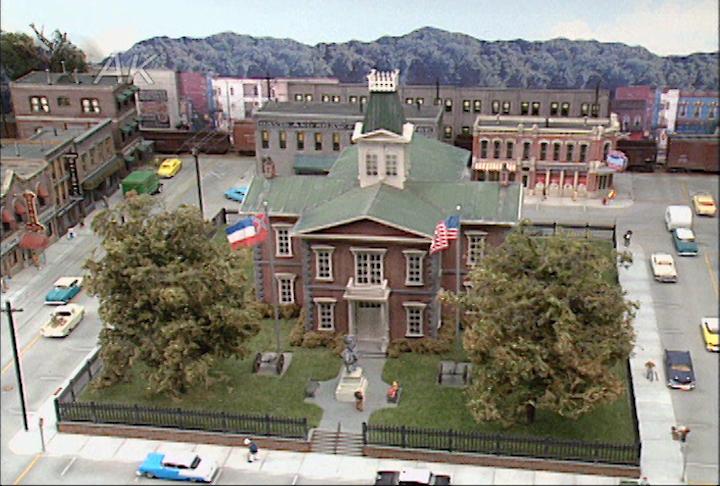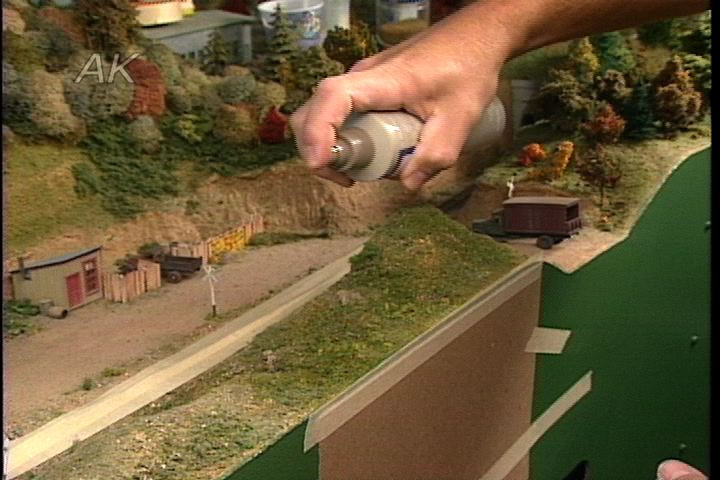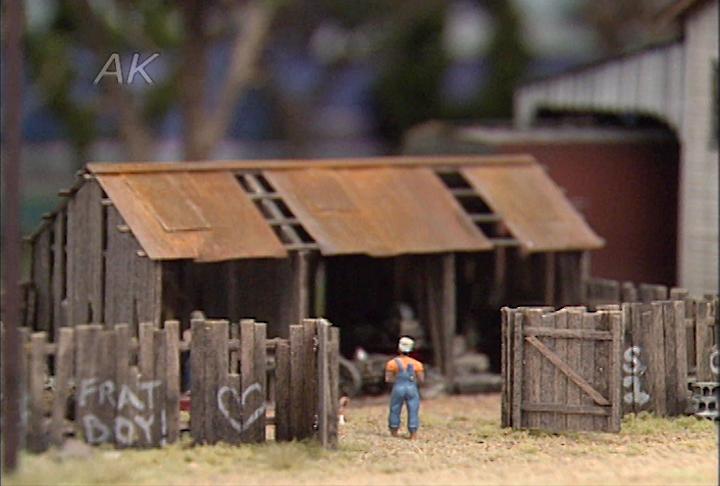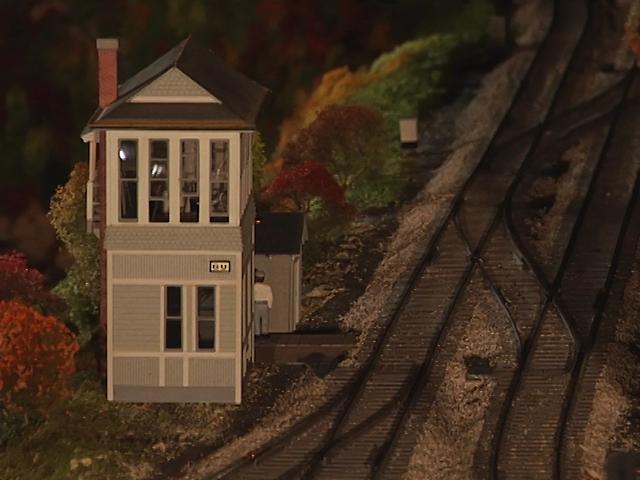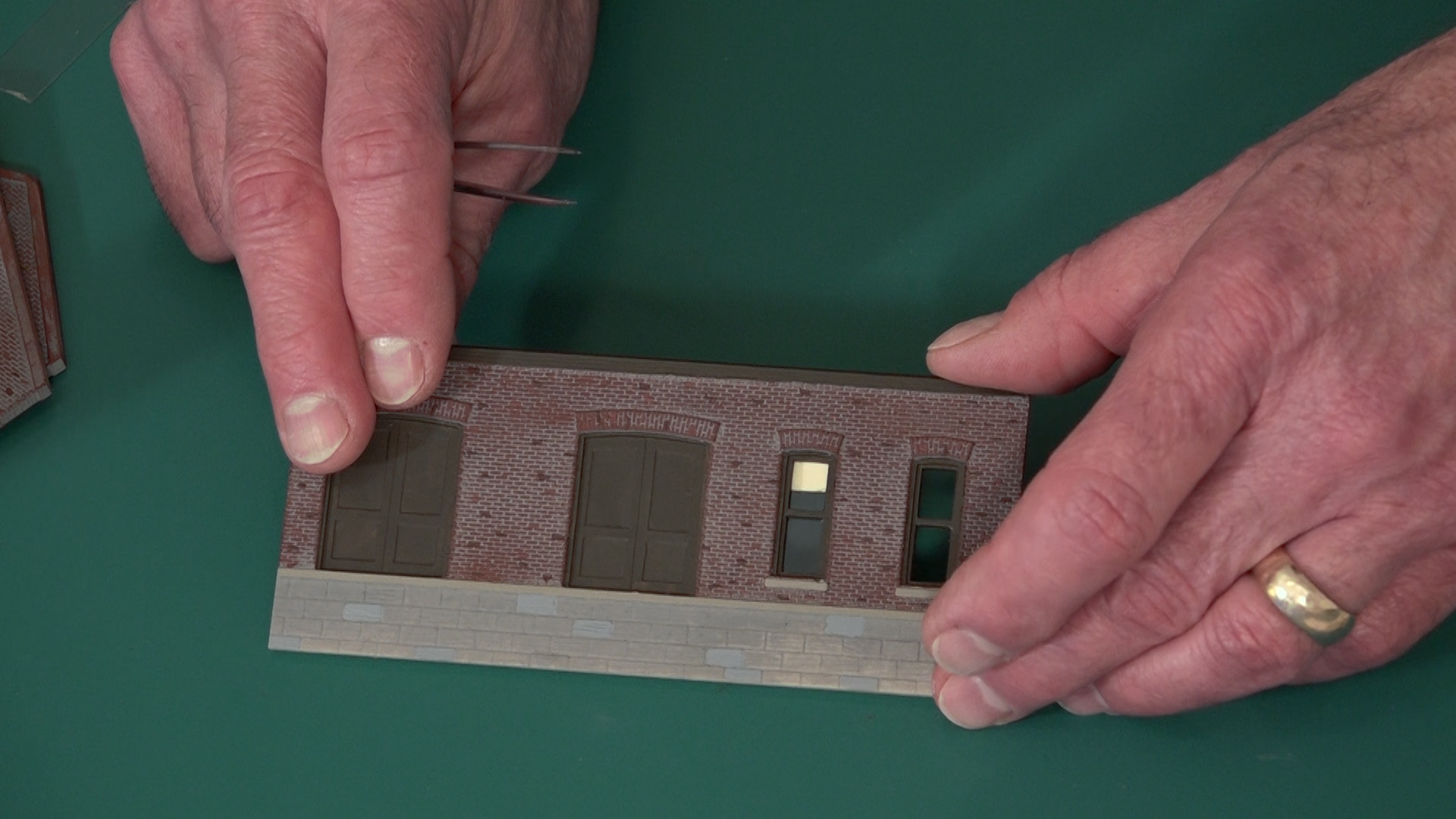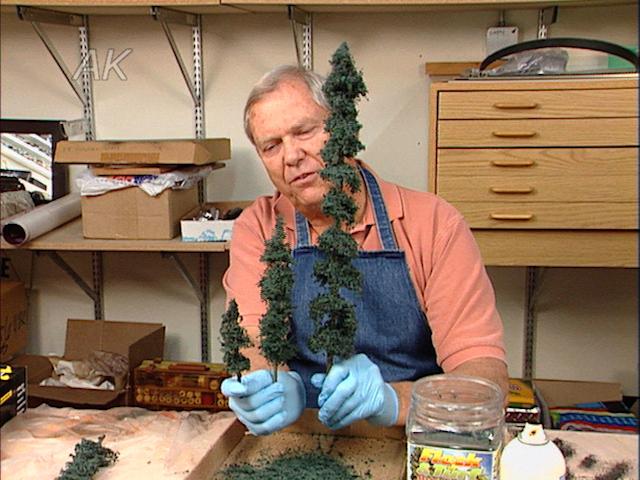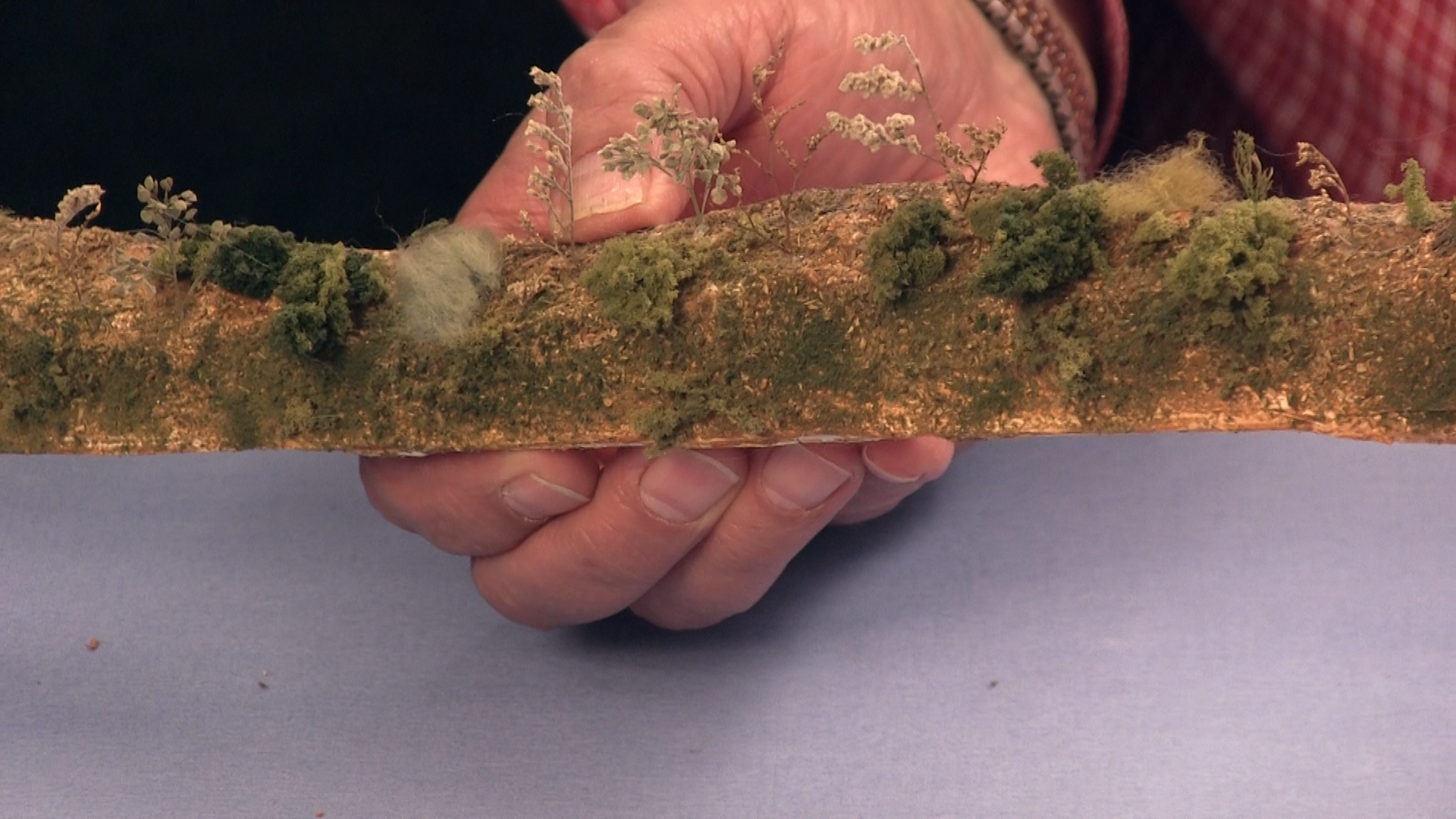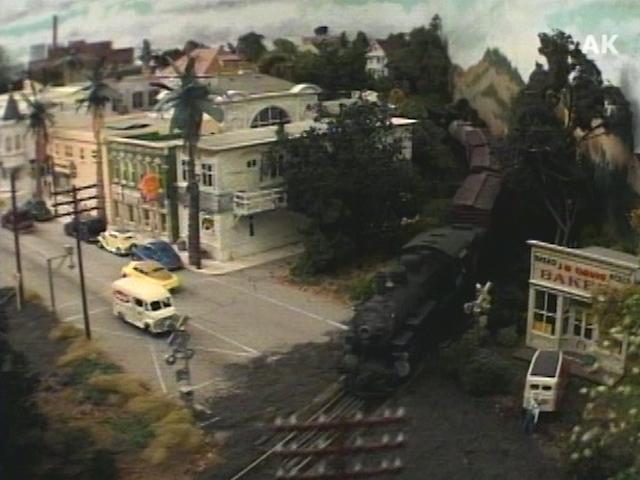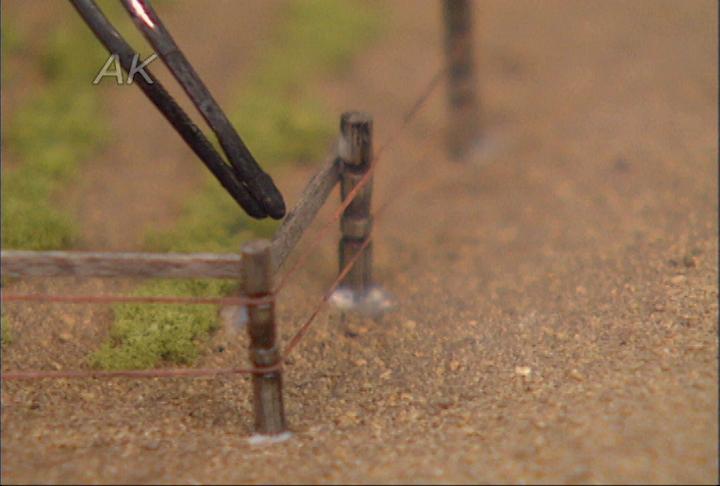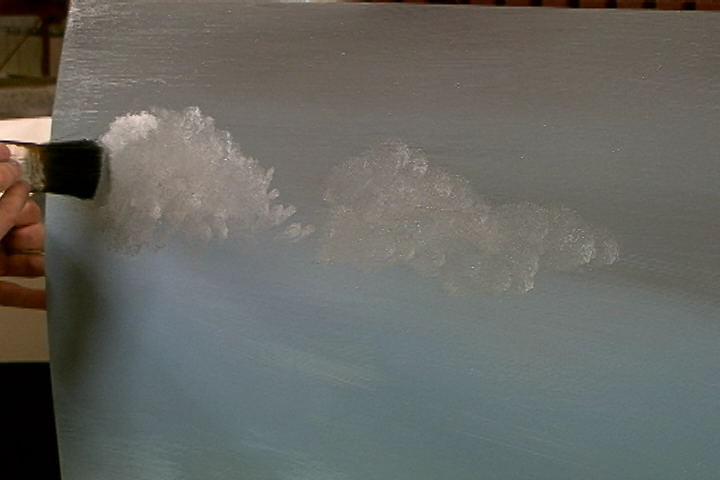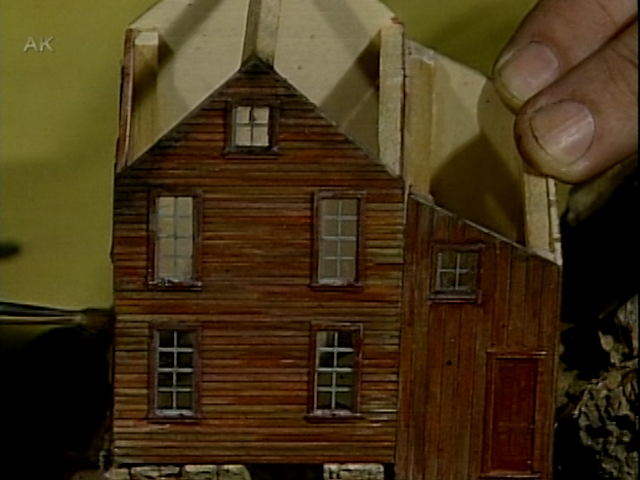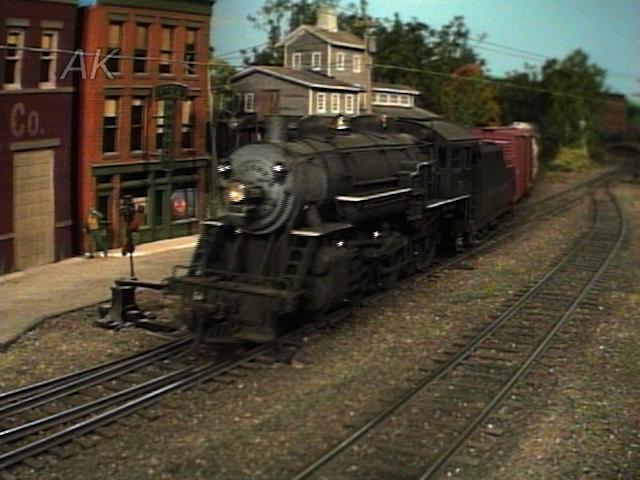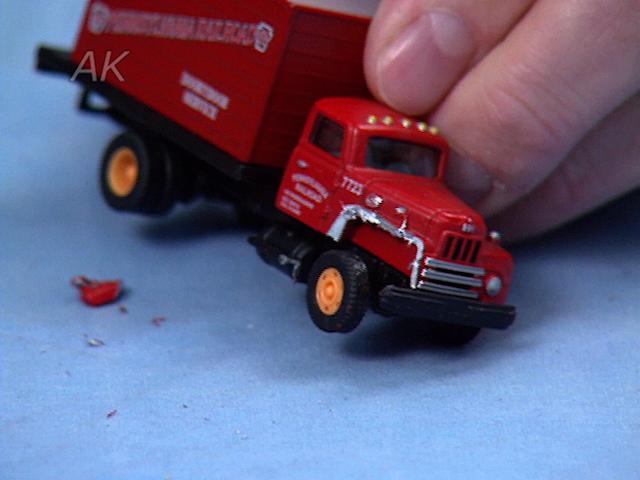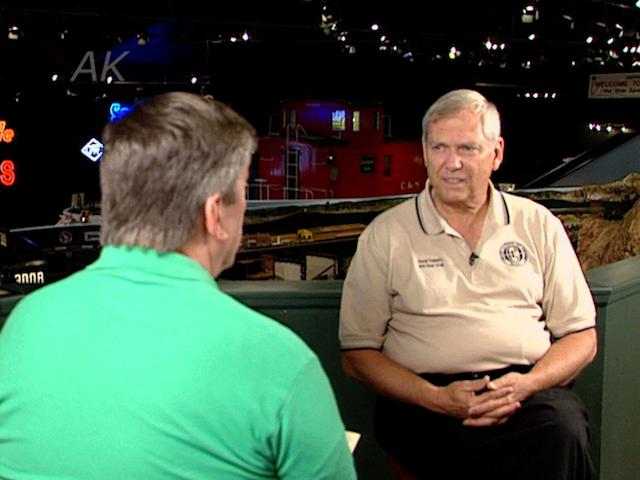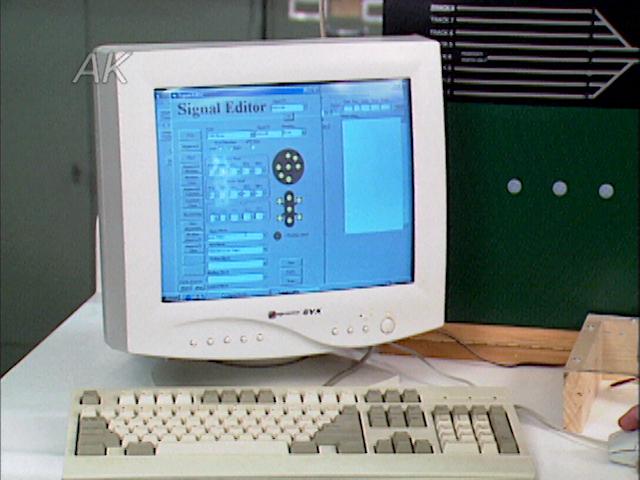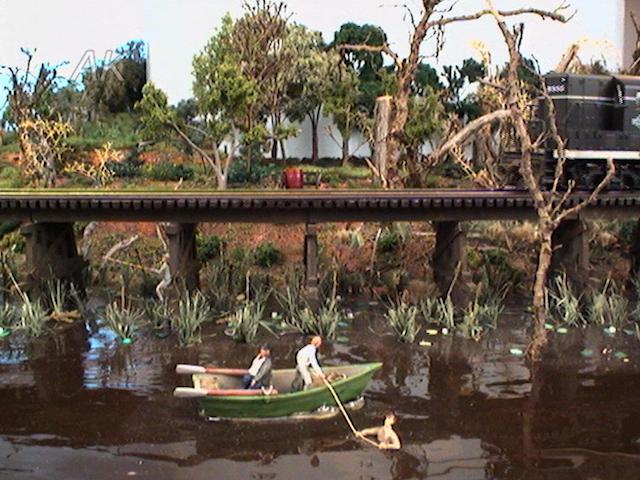
Resistance Wheelsets on Gary Hoover’s Santa Fe Model Railroad
Gary HooverThe signal systems that Gary Hoover has for the DCC on his Santa Fe model railroad requires current between two rails. For the freight cars to accomplish this, he adds a resistor that bridges from one metal wheel to the other metal wheel. There are two types of resistors that modelers can use; one is a typical resistor found at most electronic stores while the other is much smaller.
The smaller resistor has the advantage of being close to impossible to see on the axle. On most boxcars there are plastic axles, so modelers can use either type of resistor. Axles that are metal should use the common type of resistor, because there will be less trouble of shorting out between the wheels.
Before he superglues the resistor onto the axle, Gary needs to make sure that the inside of the wheels are conductive. This is because many times, the manufacturers place paint on the inside of the wheel. He uses a file to remove this paint for a better electrical bond between the lead on the resistor and the wheel itself. He does the same with the surface tread on the wheel.
The ends of the resistor are bent up slightly for better area to apply the conductive paint. He uses Nickel Print by MG Chemicals applied on the areas where he removed paint with a toothpick. When the paint dries, it creates a great conductive bond between the lead of the resistor and the wheel itself. Allen Keller goes on to ask Gary about the subtle weathering on his layout. He uses weathering powders for basic weathering and dry brushing with a dull silver paint on aspects that stick out, such as rivets on a tender. For more Allen Keller videos, visit the Model Railroad Academy archives.
Explore videos by Gary Hoover
You may be interested in
Premium Membership
Unlock exclusive member content from our industry experts.
- 24/7 Access to Premium Model Railroading Videos, Projects, and Tips
- Step-by-Step Instructional Guides & Layout Plans
- 50% Off Video Downloads Purchased in the Model Railroad Academy Shop
- Access to Ask the Expert Program
Unlock exclusive member content from our industry experts.
- 24/7 Access to Premium Model Railroading Videos, Projects, and Tips
- Step-by-Step Instructional Guides & Layout Plans
- 3 Full-Length Video Downloads to Watch Offline
- 50% Off Video Downloads Purchased in the Model Railroad Academy Shop
- Access to Ask the Expert Program
Gold Membership
$326 Value
Get everything included in Premium plus exclusive Gold Membership benefits.
- 24/7 Access to Premium Model Railroading Videos, Projects, and Tips
- Step-by-Step Instructional Guides & Layout Plans
- 9 Full-Length Video Downloads to Watch Offline
- 2 Full-Length Classes to Keep for Life
- 2 Downloadable Guides
- Discounts on Purchase-to-Own Content in the Model Railroad Academy Shop
- Access to Ask the Expert Program
- Exclusive GOLD LIVE Streaming Events

